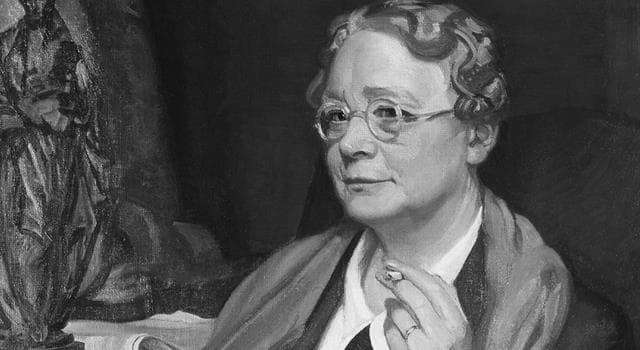Table of contents
Ask a group of ten people what a “brand” is, and you’ll get at least five different answers.
In the past, I believed that this was because of how carelessly the term gets thrown around. Sometimes it feels like branding people just make things up as they go. And I know a great number of them do.
But recently I had a realisation that completely changed the way I understand brands.
Those of you who know me, know that I have an interest in Christian theology. Well, recently, I read a book by Dorothy Sayers. Sayers was a 20th century British author primarily known for her crime novels. She was a friend of C. S. Lewis, J. R. R. Tolkien and several other members of the informal literary club known as the Inklings.

How did a 20th century crime writer help me solve the great branding mystery?
Turns out, Sayers also wrote The Mind of the Maker, a brilliant book explaining the Holy Trinity in terms of human creativity and artistry.
Writer Gregory Wolfe explains Sayers’ book better and more succinctly than I can:
In The Mind of the Maker, one of her most profound works, Sayers contends that the creative process in art works in ways that correspond to the dynamic relation among the three Persons of the Trinity in Christian theology—and that the activity of one illuminates the activity of the other.
And to my great surprise, this book held the key to understanding not only the Divine but one of the most profane parts of life: commercial branding.
But before I go further, let’s take a step back and consider the importance of metaphor.
The importance of metaphor
Human thought is metaphorical.
The only way we are able to understand, think, or talk about anything is through metaphor and analogy. “Human cognition is fundamentally shaped by poetic processes,” says Raymond Gibbs, professor emeritus in Psychology at UCSC.
From the article:
‘Metaphor is so pervasive, we’re blind to it,’ says Gibbs. ‘Even when people don’t think they’re doing it, they’re doing it. You can’t help it. Figurative speech reflects how we actually experience much of our lives. We talk about life being like a journey because that’s how it feels.’
Metaphor is how we are able to describe and explain reality. But it is also literally how we think. The metaphors we use for a thing literally shape our ability think about it.
Muddled thinking is a result of using the wrong metaphor. So the more metaphors we have at our disposal, the better equipped we are to think clearly.
Back to God and branding
Sayers explains the connection between the Trinity and human creativity in the following way:
For every work [or act] of creation is threefold, an earthly trinity to match the heavenly.
First, [not in time, but merely in order of enumeration] there is the Creative Idea, passionless, timeless, beholding the whole work complete at once, the end in the beginning: and this is the image of the Father.
Second, there is the Creative Energy [or Activity] begotten of that idea, working in time from the beginning to the end, with sweat and passion, being incarnate in the bonds of matter: and this is the image of the Word.
Third, there is the Creative Power, the meaning of the work and its response in the lively soul: and this is the image of the indwelling Spirit.
And these three are one, each equally in itself the whole work, whereof none can exist without the other; and this is the image of the Trinity.
So you have the following relationships between human creation and the nature of God:
- The Creative Idea ⟷ The Father
- The Creative Activity ⟷ The Son
- The Creative Power ⟷ The Spirit
There is the idea behind the book, there is the act of writing it, and there is the effect it has on the reader.
After reading it over the course of a week, I finished The Mind of the Maker. Honestly, it’s a fantastic book and one that I would recommend to anyone interested in divine (or human!) nature.
But a day later, I was sitting at my office when suddenly a light-bulb went off. My mind was blown: The nature of brands is triune too.
The triune nature of brands
Just like a human work of art, a brand has three dimensions: the Brand-as-Idea, the Brand-as-Identity, and the Brand-as-Image. What’s more is, each dimension corresponds to the dimensions of human works of art, and to the three persons of God.
Let me add to the list from before:
- The Brand-as-Idea ⟷ The Creative Idea ⟷ The Father
- The Brand-as-Identity ⟷ The Creative Activity ⟷ The Son
- The Brand-as-Image ⟷ The Creative Power ⟷ The Holy Ghost
Your brand has three dimensions. Yet, it’s still just one brand.
This metaphor perfectly illluminates the meaning of the term “brand” as it is used by different people. Let me show you.
The-Brand-as-Idea
The-Brand-as-Idea is just that: the idea behind your brand. I don’t mean it in any philosophical way. The Brand-as-Idea is basically what you as the business owner desire your brand to be.
When someone says “my brand is high-end” or “my brand is playful,” they are usually referring to the idea as opposed to the identity—especially if they haven’t invested a lot of time or money into the brand identity yet.
In 1912, L. L. Bean had an idea for a brand that would make durable, lightweight boots for outdoorsmen and guarantee full customer satisfaction. Steve Jobs had an idea for a brand that would make computers easy to use for regular people, and empower them to change the world for the better.
Maybe I’m stating the obvious here, but the success of your brand relies in great part on the strength of your idea.
Because if you don’t have a clear idea, your brand will lack direction. You will struggle to establish a strong identity or shape a positive image of your brand.
The idea is what animates the brand and give it direction.
By the way, this is why I stress the importance of developing a proper brand strategy: it helps you clarify and sharpen your idea.
The-Brand-as-Identity
The Brand-as-Identity is the physical manifestation of your brand. It’s the incarnation; the equivalent of the Son. It refers to all the tangible elements of your brand: the logo, the colors, the physical location, the way you write and speak—basically the way everything is presented.
When most designers talk about brands, they’re actually referring to brand identities:
“I design brands for purpose-driven companies.”
“Did you see the recent Warner Bros rebrand? They completely removed all the gold from their logo.”
“That’s a great-looking brand.”
When the brand identity manifests a good brand idea, it establishes a brand image in the hearts and minds of people who are exposed to your brand.
The Brand-as-Image
Finally, we have the Brand-as-Image. Marty Neumeier in The Brand Gap says that “your brand is not what you say it is; it’s what they say it is.” When he says this, he’s referring to the aspect of your brand that is the image.
I understand why branding gurus like Marty Neumeier talk about brands in this way. By talking about the Brand-as-Image they make people see why branding matters: it shapes how people perceive you, which of course determines whether they buy from you or one of your competitors.
But Neumeier and others posit a false dichotomy: it is not either what you say or what they say; it is both. Your idea and identity should be conceived with the desired image in mind, but you ignore them at your peril.
How they interact
Sayers points out that the three dimensions of a book need to be in harmony in order for it to be a good book.
If the idea is weak:
Thus, a confirmed feebleness in the “father”, or Idea, betrays itself in diffusion, in incoherence, in the breach of the Aristotelian unity of action or, still more disastrously, of the over-riding unity of theme.
If the activity is weak:
Everything in the visible structure of the work belongs to the son; so that a really disastrous failure in this person of the trinity produces not a good writer with a weakness, but simply a bad writer. There are too many of these for easy selection; moreover, the judgment upon bad writing is oblivion, so that the dreadful example, when found, is not likely to be familiar.
If the activity is strong but the idea is weak:
… If (and this happens curiously often) it enchants us in the reading by the elegant succession of its parts, and yet leaves in our memories no distinct impression of itself as a whole—in such cases, there is something radically wrong with its paternal Idea.
If the power is weak:
Under the terms of our analogy, failure in the ghost is the characteristic failure of the unliterary writer and the inartistic artist. I do not mean the “natural”, untrained artist as distinct from the bookish or academic kind; I mean the men who use words without inspiration and without sympathy … It is the deadness of the unghosted that hangs like a millstone upon the eloquence of pedestrian politicians and of conscientious parsons who have no gift for preaching.
So that’s how imbalances affect works of literature. How do they affect brands?
If your Brand-as-Idea is weak, your brand will end up all over the place. Different parts will be pulling in different directions. People who come across your brand will be confused; unsure about what you do, how you do it, or why you do it.
If your Brand-as-Identity is weak, people won’t recognize or remember what your brand looks like. They’ll forget the name, they’ll be repelled by the colors you use and they will confuse your logo with that of your competitor’s. The impression you make will be a poor one, and you’ll soon be forgotten. If it’s just a little out of whack, we would say something about it is “off-brand,” and likely to cause confusion.
If your Brand-as-Image is weak—that is, if you have no notion of the type of effect your Idea and Identity should create in the mind of your potential customer when you conceive of them, your brand will appear lifeless and corporate—even if the idea is clear and the identity is well-executed.
How to create a strong brand
To create a strong brand, the three aspects of your brand need to be in harmony.
You need an idea, and it needs to actually be good.
Your identity needs to orient itself towards your idea. Every decision you make about your brand identity—the visual design, copywriting, what touchpoints you invest in, etc.—needs to conform to the idea. In theological terms: the Son does the will of the Father.
You need to keep your desired image in mind the whole time, so that things don’t fall flat. Without a desired image, your brand will appear lifeless and unauthentic.
Do all those things, and your brand will flourish. Do them well, and your brand will be unforgettable.
Hope you found this blog post interesting.
Until next time,
— Jon.

Jon Persson
Jon Persson

Hiring a designer? Grab this.
My Pre-Hire Checklist gives you valuable tips to consider before hiring an identity designer.


